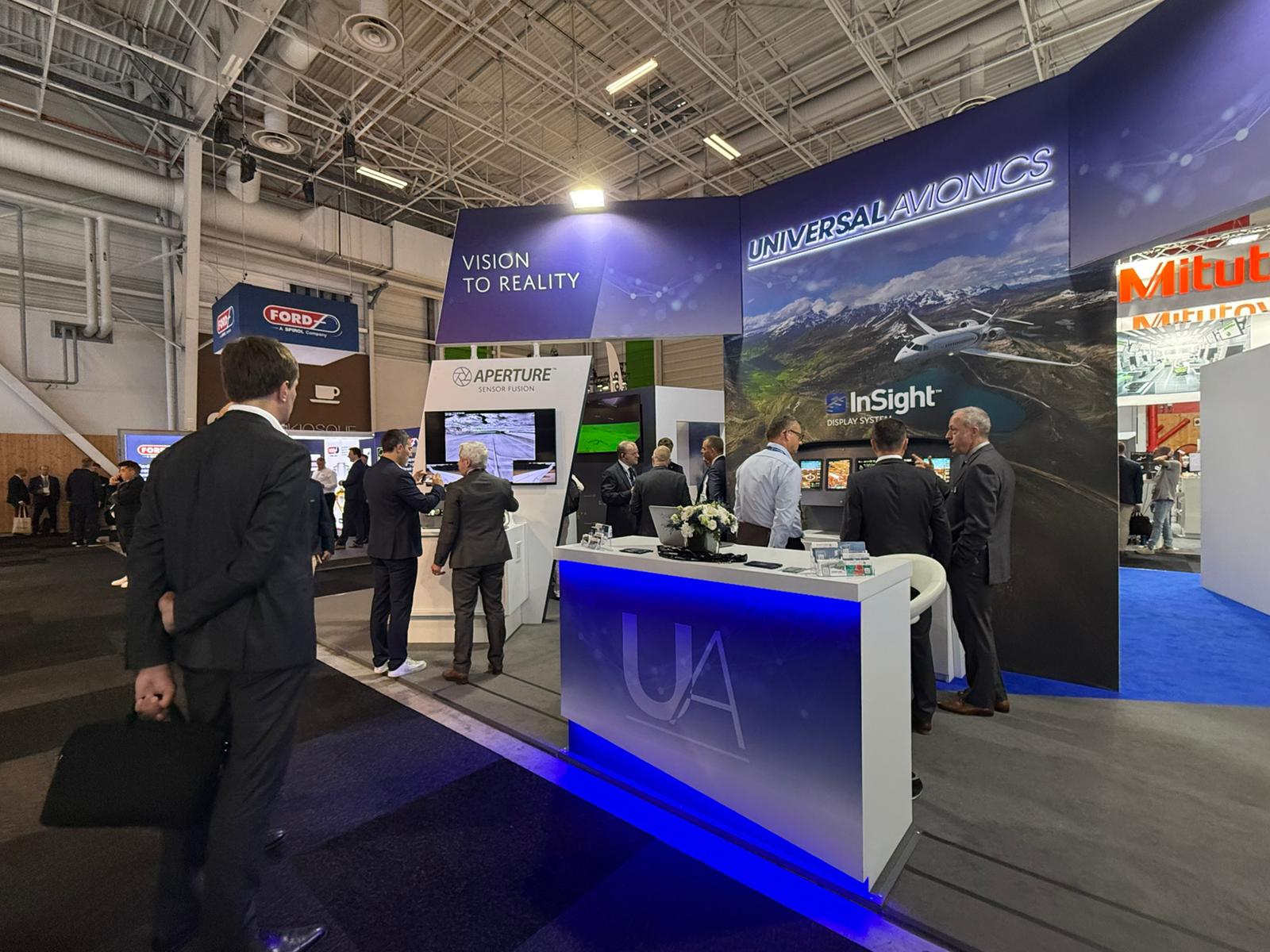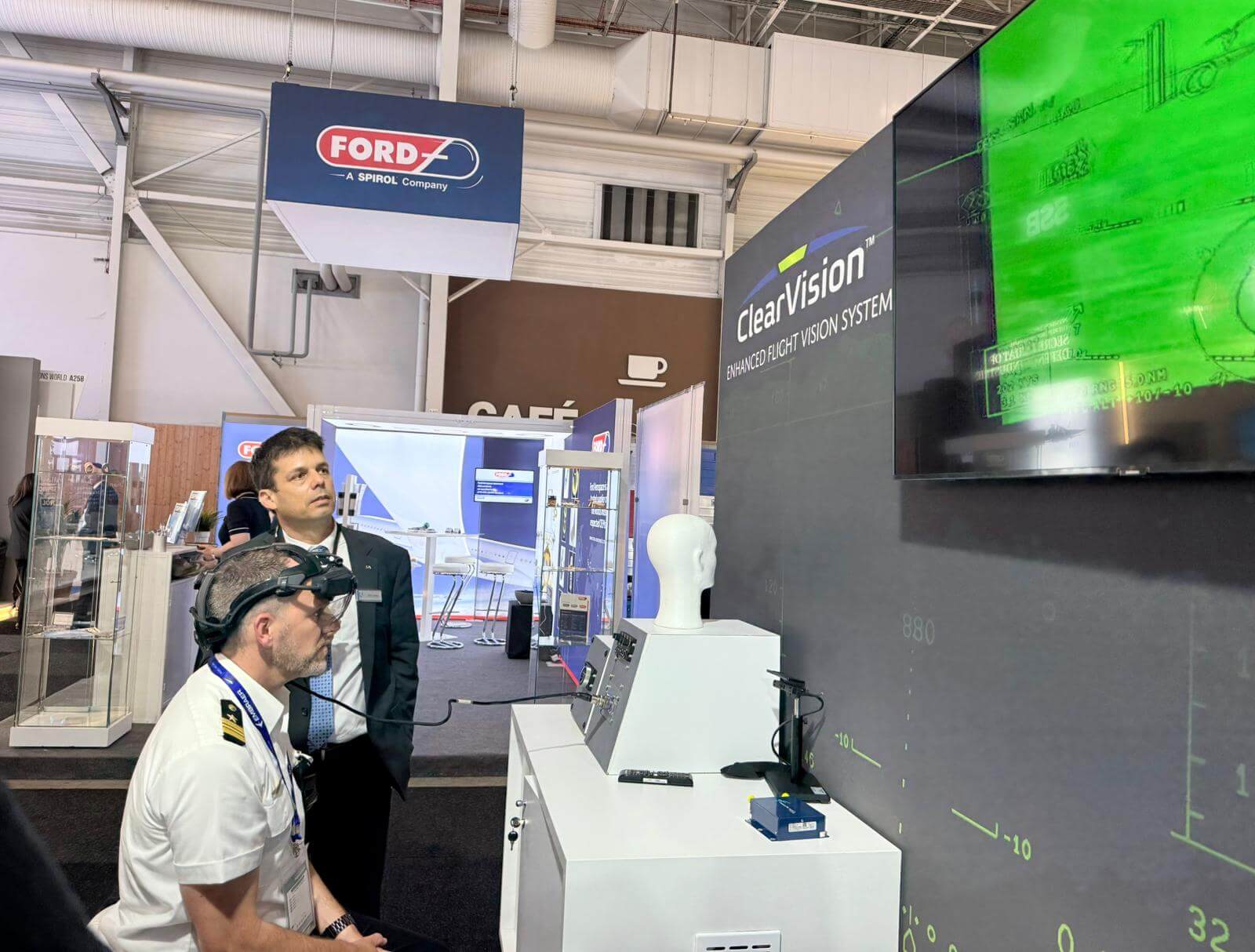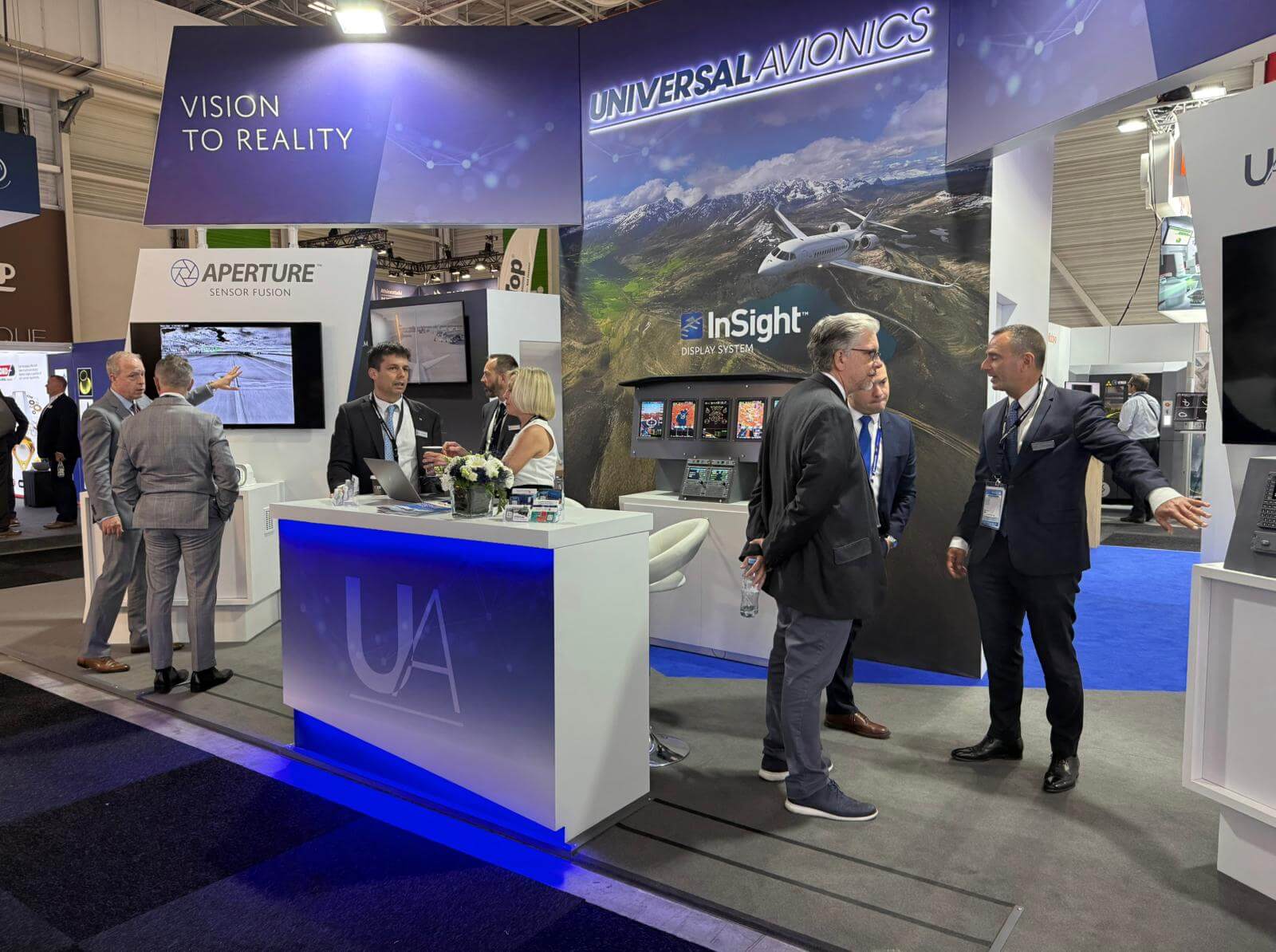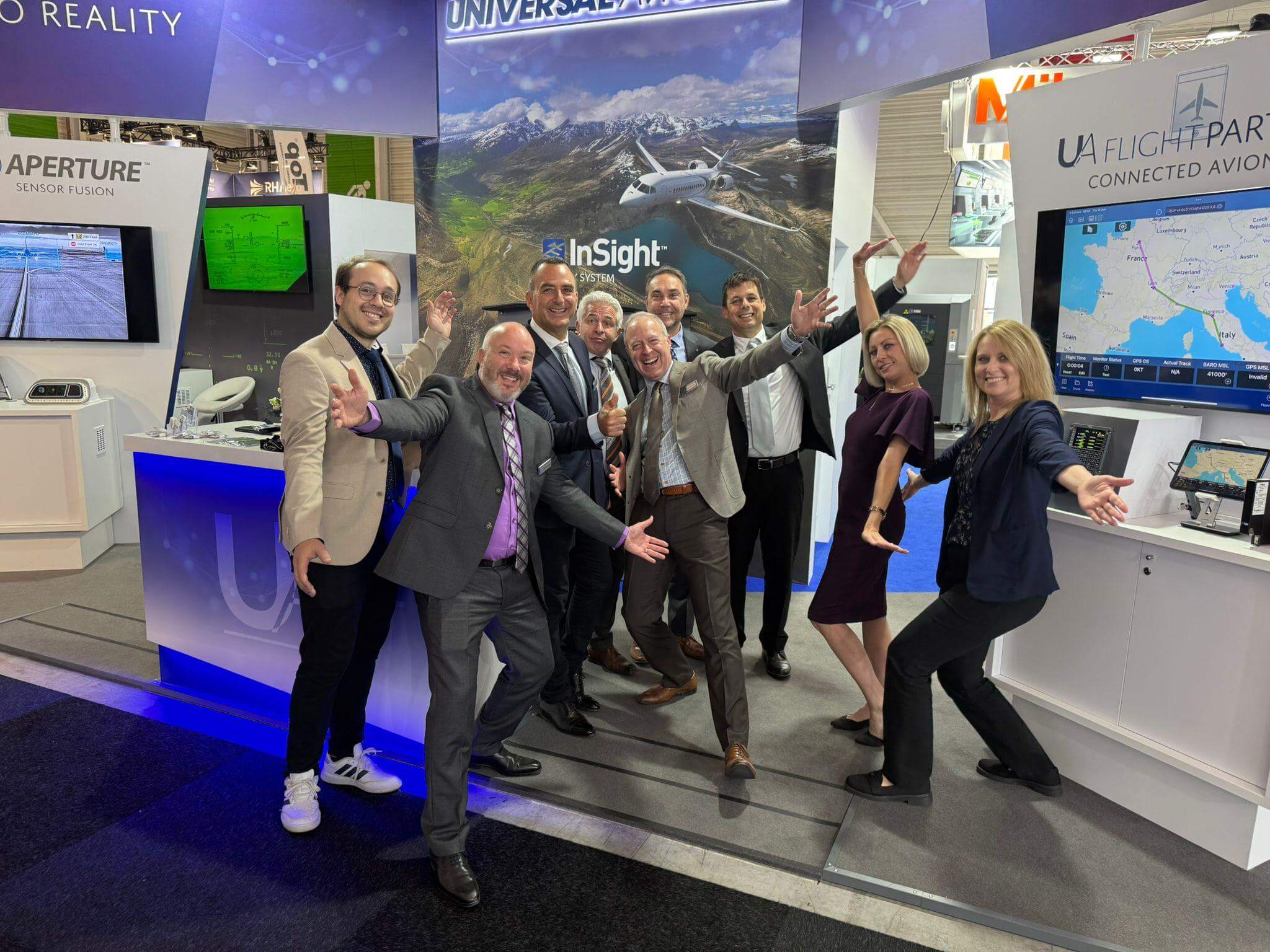
The 2025 Paris Air Show has concluded, leaving the aviation industry buzzing with excitement about the transformative technologies that will shape our skies in the coming years. Universal Avionics' "Vision to Reality" showcase received exceptional attention, demonstrating how advanced avionics are addressing today's most pressing operational challenges while establishing the foundation for tomorrow's safer, more efficient flight operations.
This year's show marked a significant return to form for the global aerospace industry, with more than 2,400 exhibitors from 48 countries. The biennial event, held at Le Bourget Airport from June 16-22, attracted over 305,000 visitors, making it one of the most successful editions in the show's 114-year history.
For those who couldn't join us in Paris—or who want a deeper dive into the technical capabilities we presented—this post-show summary highlights the key innovations that captured industry attention and the technical details behind them.
Enhanced Vision Systems: Technical Breakthroughs in Visual Intelligence
 Demoing the ClearVision Enhanced Flight Vision System with SkyLens
Demoing the ClearVision Enhanced Flight Vision System with SkyLens
Universal Avionics’ ClearVision® Enhanced Flight Vision System (EFVS) was a highlight, drawing crowds eager to see how it empowers pilots in challenging conditions. ClearVision provides intuitive visual modes: Enhanced Vision, which fuses imagery from multispectral sensors (visible, short-wave, near-infrared, and long-wave infrared) to penetrate fog, rain, darkness, or haze; Synthetic Vision System (SVS), rendering 3D terrain, obstacles, and airports from onboard databases; and symbology overlays, displaying critical flight data like runways, approach paths, and navigation cues.
Integrated with the ergonomic SkyLens head-up display, weighing under 18 ounces, ClearVision enables pilots to maintain visual references at decision heights as low as 100 feet, facilitating landings in conditions that previously required diversions. This capability significantly reduces weather-related delays, saving operators substantial costs and improving schedule reliability for passengers and cargo. By mitigating low-visibility risks, ClearVision enhances safety, while its support for optimized approach paths reduces fuel consumption, contributing to sustainable operations. Attendees experienced how ClearVision boosts pilot confidence, making it a cornerstone for safer, more efficient flights across commercial, business aviation, and special mission operations.
"What we demonstrated at Paris this year isn't just about showcasing technology - it's about solving real operational challenges that pilots and operators face on every flight. The incredible response we received validates our approach of combining enhanced vision, AI computing, and intelligent connectivity into an integrated ecosystem that delivers tangible safety and efficiency benefits. We're not just imagining the future of aviation—we're building it.”
– Dror Yahav, Universal Avionics CEO
Aperture: AI Computing Architecture Unveiled
Aperture™, our AI computing platform, earned acclaim, showcasing cutting-edge capabilities now undergoing test flights. Aperture leverages advanced AI to augment human perception, performing real-time visual analysis for tasks like runway and taxiway recognition, foreign object debris (FOD) detection, and automated validation against navigation databases; functions too complex or rapid for human processing alone. By delivering instant, reliable visual cues, Aperture reduces the risk of ground incidents and navigational errors, enhancing safety during critical phases of flight and taxiing. Its ability to process multiple video feeds in real time optimizes situational awareness and reduces workload for pilots, acting as an additional layer of confirmation and confidence for operations.
![PHOTO-2025-06-22-06-17-59[2] Universal Avionics at Paris Air Show 2025](/images/default-source/universal-avionics/blogs/vision-to-reality-paris-air-show/photo-2025-06-22-06-17-59-2.jpg?sfvrsn=482f3398_2)
Beyond the hardware specifications, we demonstrated how Aperture's software framework enables continuous learning without compromising certification boundaries. Through a process we term "Certified Foundation with Continuous Enhancement," the system maintains rigorous safety standards while allowing for regular updates to AI capabilities through a carefully managed deployment pipeline.
Smart Taxi Assist: Inside the Speech Recognition Engine
Our interactive Smart Taxi Assist demonstration allowed visitors to experience firsthand how speech recognition technology can enhance ground safety. The system employs a hybrid approach combining over 10,000 hours of recorded ATC communications with contextual language models to train its transcription algorithm, with an accuracy of over 95% even in environments with overlapping transmissions and varying accents.
Smart Taxi Assist correlates spoken taxi instructions with airport database visuals, displaying cleared routes on moving maps and flagging potential discrepancies or hazards, serving as a digital co-pilot during complex ground maneuvers. By reducing taxi errors, a frequent cause of ground collision incidents, Smart Taxi Assist enhances safety and instills pilot confidence, particularly in unfamiliar or congested airports. Fewer errors mean fewer delays, streamlining ground movements to improve operational efficiency and sustainability through reduced fuel consumption during taxiing. Available for trial at select airports, with a free public app rollout planned, this technology’s ability to save time, costs, and potentially lives resonated with operators, who saw its immediate value in preventing costly incidents and enhancing ground operations.
InSight Flight Deck: Technical Integration Capabilities
![PHOTO-2025-06-22-06-18-57[1] Universal Avionics at Paris Air Show 2025](/images/default-source/universal-avionics/blogs/vision-to-reality-paris-air-show/photo-2025-06-22-06-18-57-1.jpg?sfvrsn=ece9ffd8_2)
InSight Flight Display System demo in a 5-display configuration
The InSight® Flight Display System showcased its transformative potential for aging aircraft like the Dash-8, replacing outdated CRT displays with high-resolution, touchscreen-enabled screens featuring synthetic vision, advanced mapping, and configurable layouts. Its open architecture facilitates seamless integration with legacy and next-generation systems, supporting upgrades for Data Comm to meet future airspace mandates. Software-driven updates allow new functionalities without hardware replacements, allowing older aircraft to fly far into the future with InSight.
By presenting critical flight data intuitively, InSight improves pilot situational awareness, minimizing errors and enhancing safety across all flight phases. Operators at Paris appreciated InSight’s cost-effective upgrade path, recognizing it as a strategic investment to future-proof aging fleets, ensure regulatory compliance, and maintain competitiveness in a dynamic aviation landscape.
KAPTURE Flight Recorders: Advanced Data Capture and Analysis
The next-generation KAPTURE® flight recorder system generated significant interest among operators seeking solutions for the upcoming FAA 25-hour recording mandate. Capturing up to 48 audio channels, including cockpit voice and ATC communications, and hundreds of flight parameters like airspeed, altitude, and engine performance, KAPTURE employs real-time compression to maximize recording duration and wireless data offload for rapid post-flight analysis.
KAPTURE’s integration with the UA FlightPartner™ ecosystem enables automated trend analysis: Identifying patterns in fuel use, system health, or pilot performance to support predictive maintenance and training enhancements. By optimizing maintenance schedules and flight operations, KAPTURE drives sustainability and cost savings, while its detailed recordings facilitate thorough incident reviews, enhancing safety by preventing future occurrences. Operators valued KAPTURE’s transformation of compliance-driven data into actionable intelligence, improving fleet reliability, reducing operational costs, and reinforcing safety protocols.
![PHOTO-2025-06-22-06-18-56[1] Universal Avionics at Paris Air Show 2025](/images/default-source/universal-avionics/blogs/vision-to-reality-paris-air-show/photo-2025-06-22-06-18-56-1.jpg?sfvrsn=d649b350_2)
A stress ball replica of Universal KAPTURE 25-hour Cockpit Voice and Flight Data Recorders
Industry Reaction and Future Directions
The technical depth of our Paris Air Show presentations generated substantial industry engagement, with operators, OEMs, and regulators recognizing how these technologies address both immediate operational challenges and long-term industry objectives.
Particularly noteworthy was the recognition that Universal Avionics' approach to integrating enhanced vision, artificial intelligence, and data connectivity creates a comprehensive safety ecosystem rather than isolated point solutions. The aviation intelligence framework we presented establishes a foundation for continuous innovation, with technical roadmaps demonstrating how today's implementations will evolve to support increasingly sophisticated applications in the coming years.

As the aviation industry returns from Paris, the focus shifts from technology demonstrations to practical implementation. Universal Avionics' technical teams are actively working with operators, OEMs, and modification centers worldwide to transform these showcase technologies into certified solutions addressing specific operational challenges.
Whether you're looking to enhance safety margins, improve dispatch reliability, extend aircraft service life, or prepare for emerging regulatory requirements, the technical capabilities demonstrated at Paris provide the foundation for your next avionics strategy.
Our technical specialists are available to discuss how these technologies can be tailored to your specific operational requirements and fleet composition. Contact your Universal Avionics representative to schedule a detailed technical briefing or arrange a hands-on demonstration at our facilities.
The vision we presented in Paris is becoming reality in aircraft worldwide—we invite you to join us in shaping the future of safer, more efficient flight operations. Stay tuned for more exciting updates from Universal Avionics!


